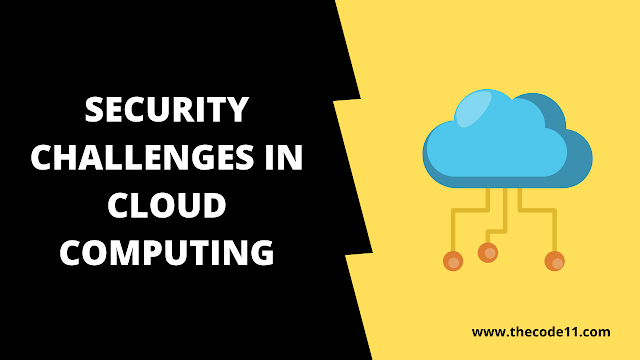In this tutorial you are going to learn about Security Challenges in Cloud Computing. As cloud computing continues to revolutionize the IT industry, understanding its potential vulnerabilities is crucial.
Introduction
Cloud security consists of a set of rules, controls, procedures, and technologies that work together to protect cloud base systems, database infrastructure.
Although the risks and responsibilities will be shared between the provider and customers, the ultimate legal liability for unauthorized and illicit data disclosures will remain with the customer as the data owner. The customer will likely be adversely affected by the negative publicity, loss of faith among its clientele, perhaps decreased market share and a drop in share price.
Top cloud security risks are:
- Accountability and data risk
- User identity federation
- Legal regulatory compliance
- Business continuity and resiliency
- User privacy and security usage of data
- Service and data integration
- Multi-tenancy and physical security
- Incidence analysis and forensics
- Infrastructure security
- Non-production environment exposure.
- Hacked interfaces and APIs
- Data breach and Vendor clock-in
- Denial-of-service
- Account Hijacking and Misconfiguration
- Accidental export
- Cybersecurity Attacks
Challenges and Security Issues
Cloud computing is used for enabling global access to mutual tools of resources such as services, apps, data servers and computer networks.
Security considerations while moving to the cloud:
- Define information security requirement
- Cost/benefits analysis of available cloud options
- Cloud risks analysis
- Lack of transparency
- Vendor lock-in
- lack of application
- Security and compliance concerns
- Risks of data leakage
- IT organizational changes.
Security and Privacy:
- These are the main challenges in cloud computing.
- These challenges can be reduced by using security application encrypted file systems, data loss software.
Interoperability:
The applications on the platform should be able to incorporate services from the other platform. This is known as interoperability
Portability:
- The application running on one cloud platform can be moved to a new cloud platform and it should operate correctly.
- The portability is not possible, because each of the cloud providers uses different standard languages to their platform.
Service Quality:
- The service-level-agreement (SLA’s) of the providers are not enough to guarantee the availability and scalability.
- The business disinclined to switch to cloud without the strong service quality guarantee.
Computing Performance:
- Need of high network bandwidth for some applications on cloud
- Due to the high network bandwidth, it results in high cost.
Reliability and Availability:
Most of the businesses are dependent on service provided by the third party, hence it is mandatory for the cloud systems to be reliable and robust.
Steps to Overcome Security Challenges
To overcome the security challenges one should always know to manage the responsibilities such as:
- To know what level of consideration has management given to adopting cloud computing, and what is management’s current position in this area?
- To Whom the management is responsible for understanding and managing the business risks associated with cloud computing?
- What are the competitors doing with the cloud solutions?
- Does management have an effective process in place to monitor cloud computing adoption and usage?
- What would be the impact of cloud computing to management’s overall internal control structure (improved, unchanged or diminished)?
This article on Security Challenges in Cloud Computing is contributed by Hemalatha P. If you like TheCode11 and would like to contribute, you can also write your article to us. Here is our mail id - thecode11info@gmail.com

